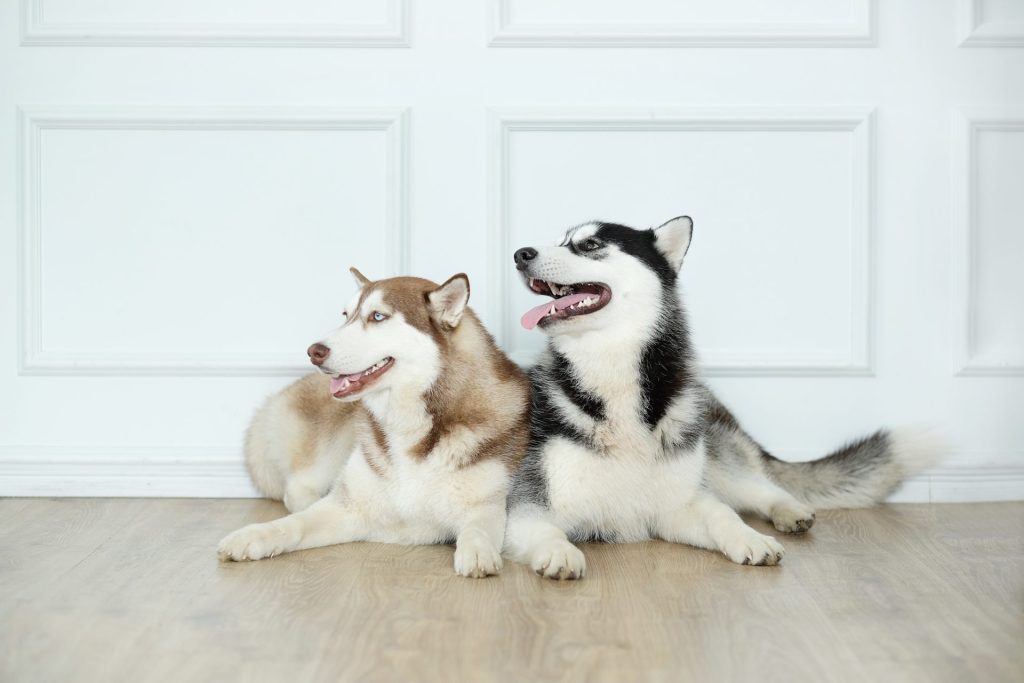Introducing a new pet into your home is an exciting and gratifying experience. Dogs are not only faithful friends, but they can also be well-behaved members of your family if properly trained. While many dog owners appreciate their pups’ silly antics and limitless energy, teaching them basic commands is critical for sustaining a healthy cohabitation.
Welcome to the entire guide on teaching your dog the most important commands for good behavior. Training your dog not only improves their overall conduct but also strengthens your bond with your canine buddy. You can develop a peaceful and disciplined relationship with your dog by mastering these commands, assuring a pleasant and fulfilling friendship.

In this post, we’ll look at the most important instructions to teach your dog for good conduct, laying the groundwork for a loving and disciplined relationship.
1. Basic Commands for Dogs to Build a Strong Foundation
- Focus and Attention Training
Before moving on to particular commands, teach your dog to engage with you. This creates the groundwork for effective training sessions. Reward your dog with food or toys for making eye contact with you or reacting to their name. Practice in a peaceful, distraction-free area, gradually increasing the challenge as your dog improves.
- Teaching the “Sit” Command
The “sit” command is a basic obedience skill that any well-behaved dog should understand. Begin by holding a goodie near your dog’s nose and gradually raising it above their head. Their bottom will automatically descend into a sitting position as their nose pursues the treat. Once your dog is situated, say their name and “sit” and reward him with a goodie. Rep, gradually fading off the treat and relying more on the verbal order.
Implementing a “Break” Command
It’s extremely important to introduce a release command such as “Break.” The Break command allows you to communicate to your dog when they are done working and can come out of a position. For example, if your dog is in a Sit, you can tell them “Break” when you are ready for them to get up and release from the Sit position. This would apply to any command such as Heel, Place, Stay, Down. We cannot expect our dogs to stay in a position forever. Implementing the Break commands provides clear communication between the owner and dog, ultimately forming a strong relationship.
- Establishing the “Place” Command
- The Place command instructs your dog to go to a designated location, or “place.” This can be a dog bed, a crate, or an area of your home. Begin by having your dog on a leash and walking them over to the Place. Walk them onto it or lure them with a treat. Once the dog is on their Place, mark the behavior by saying “Good Place!” As you are teaching this new command, keep the duration short. Give your dog the “Break” command to release them off the place. Keep doing repetitions until the dog captures what Place means. Then you can begin taking steps back and commend them for remaining in Place. Increase the duration and distance gradually and eventually remove the leash! Remember to use a release phrase like “Break” to let them know when they can leave the Place position.
2. Essential Obedience Commands for Dogs
- Building a Reliable “Stay” Command
The “stay” command instructs your dog to retain a position until you give him a release cue. Begin by placing your dog in a sitting position. Extend your hand towards them and say “stay” firmly yet calmly. Take a step back and commend them for remaining put. Increase the distance and duration of the stay gradually, continually rewarding your dog for success. Remember to use a release phrase like “okay” to let them know when they can move.
For more videos, subscribe to our YouTube channel at Upstate Canine Academy.
Increase the difficulty level gradually to obtain a solid “stay” command. Begin by introducing longer distances or distractions. Give your dog a treat for properly staying in position. Your dog will become an expert at keeping put with time and practice.
- Recall Training: Teaching “Come” Command
The “come” command is critical for the safety of your dog. Begin by utilizing a long leash in a quiet and secure location. Once, say “Come” cheerfully and gently tug on the leash. Reward your dog with praise and treats as they approach. Gradually increase the distance and practice in a variety of settings. Remember that the “come” command should always be connected with good things.
3. Polite Walking and Leash Etiquette
- Teaching Loose Leash Walking with a Heel Command
Teaching a Heel command will allow for more enjoyable walks. It also provides mental exercise for your dog as they need to “work” during their walk. Put your dog on your left side and walk forward. Reward your dog for walking by your side without pulling to encourage loose leash walking. If your dog pulls ahead, provide some pressure to pull them back into place. Reward the correct position, along your left side, by saying “Good Heel!” You can also reinforce this behavior with treats and praise. If your dog continuously pulls ahead, exploring different training collars may be a good option to assist in teaching your dog loose leash walking. Addressing Pulling and Leash Reactivity
Consider obtaining professional help from a dog trainer or behaviorist if your dog has developed a tugging habit or demonstrates leash reactivity towards other dogs or distractions. You may assist your dog in overcoming these obstacles and enjoy stress-free walks by providing boundaries and clear communication. Remember that this is a process, so don’t be too hard on yourself or your dog.
4. Teaching Your Leave It
- Mastering the “Leave It” Command
To begin, have your dog on a leash. Take a treat and toss is on the ground. Most dogs will go for the treat.ay “Leave it” firmly and do not allow your dog to get to the treat. Repeat this exercise and reward your dog verbally by saying “Good Leave it!” and provide them with a different treat from your hand when they do not enage with the treat on the floor.eave it” will transfer from the food in this exercise to disregard any prohibited object or distraction. This order will come in useful during walks and, well, any situation where you don’t want your dog getting their paws on something you don’t want them to.
5. Commands for Boundaries and Manners
- Teaching the “Down” Command
The “down” command is used to teach your dog to lie down and relax. It’s especially helpful when you want your dog to stay put.
Teaching the “Down” command separtely from the Sit command means you do not need to put your dog into a Sit then Down, but can put your dog directly into a Down. Hold a treat close to their nose and carefully lower it to the ground, while stepping toward them ensuring that their eyes follow it. Their body should naturally follow their nose down till they are lying down. When they reach the desired position, say “Good down!” and reward them with the treat. Continue to practice until they can lie down on command with ease. You can now both enjoy some well-deserved downtime!
- Addressing Jumping with the “Off” Command
The key is to maintain consistency and assertiveness. Put your dog on a leash. When your dog begins to jump, say “off” firmly and tug down on the leash, removing any attention or physical touch. Praise and lavish attention on them as soon as their paws touch the ground. It may take a manyrepetitions, but your dog will eventually realize that keeping their paws to themselves is the best way to go!
6. Addressing Problematic Behaviors
- Managing Excessive Barking
Excessive barking can be difficult to control, but with persistent training, you can reduce the volume to a manageable level.
The first step is to determine what causes your dog to bark. You can focus on desensitizing them to the cause once you’ve recognized it. If they bark at the doorbell, for example, teach a “Quiet” command and treat them when they remain calm. Additionally, when your dog is barking excessively, you can send them to their “Place.” Ideally, their Place would be located away from the door or window. . When they stop barking, praise them and give them a “Break” from their Place.. You can train your dog to be a maestro of silence with time and practice.

- Preventing Destructive Chewing
Destructive chewing is a common problem, but you may redirect your pup’s chewing habits to more acceptable outlets with a little training. Chewing is typically related to boredom which means you need to outlet your dog’s energy!
Most importantly, make sure your dog plenty of mental and physical exercise. Do obedience sessions, play fetch, go for a walk. When you discover your dog chewing on something they shouldn’t, say “Leave it” firmly and gently remove the object. Replace it with one of their toys, and praise them when they begin chewing on that instead. Consistency is essential, so make sure your home is “dog-proofed,” with no temptations laying around. If your dog’s chewing is related to anxious behavior, exercise will be your primariy focus. If your dog is constantly getting into things they shouldn’t, explore crate training to ensure your dog’s safety when you are not able to watch them or you leave them home alone.
To summarize, teaching your dog the basic commands for good behavior is a joyful journey that improves your bond with your canine partner. You may mold your dog’s behavior and create a harmonious and joyful living environment by using these commands consistently. Throughout the training process, remember to be patient, consistent, and understanding. You will be amazed at the transformation in your dog’s behavior and the deeper connection you will have with your devoted four-legged buddy with time and devotion.
